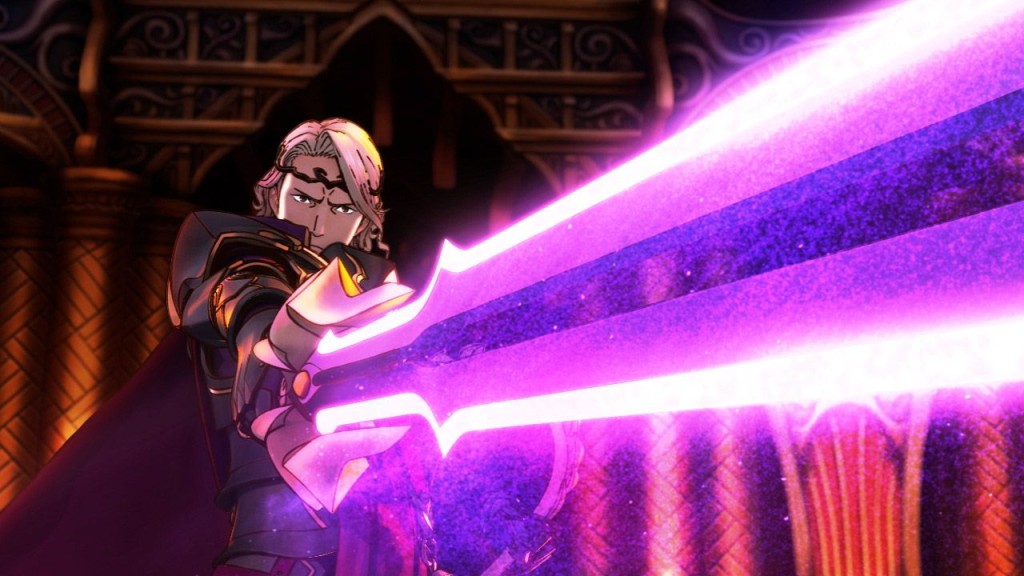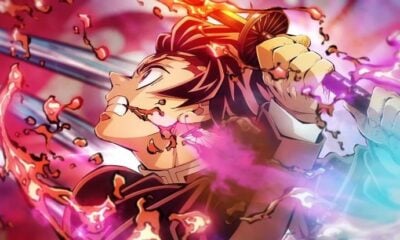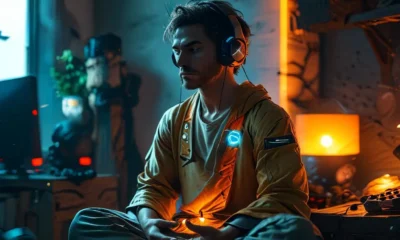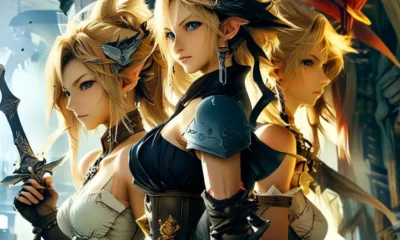Game Reviews
Cold Coffee: A Review of Fire Emblem Fates: Birthright

Fire Emblem Fates: Birthright Review
Developer: Intelligent Systems | Publisher: Nintendo |
Genre: Tactical Role-playing | Platforms: Nintendo DS | Reviewed on: DS
Imagine your ideal breakfast spread out in front of you on a lazy Sunday morning, stocked with whatever foods you find most delicious, and served with a cup of freshly brewed, olfactory-pleasing coffee. You take your time, sampling each of the delicious foods presented and then take a sip of the coffee. It’s ice cold. That’s what it is like playing Fire Emblem Fates: Birthright for the Nintendo 3DS. Most of the game is incredibly solid, the combat is fun, the character dialogue snappy, and the music, while not quite up to the pedigree set by Awakening, is excellent. However, the “cold coffee” of the Birthright experience is ultimately the player avatar, Corrin. He is the main issue behind not only Birthright, but also the entirety of the Fates experience.
The most disappointing aspect of the Corrin character as a whole is also the crux of the experience and story that the game is trying to present, the choice between Nohr and Hoshido. The central hook of all of Fates (Birthright, Conquest, and Revelation) relies on this one narrative device to sell the drama and story that is to come. “Will he accept the family he was born into, the one that he was raised in, or neither?” It is unfortunate that there is truly no choice to be made. Forbidding those who pre-ordered the Special Edition that includes all three games, any other consumers purchasing the retail or eShop versions of this game will need to pick between one side or the other before even playing it.
This critical game design failure deflates what would have been an otherwise monumental choice. By forcing the player to make the decision before they boot up the game, Nintendo blunders the execution of the most critical aspect of Fates: the decision. There is no decision to be made in game. If one had, in fact, been swayed by the arguments on either side as to why Corrin should stay, it doesn’t matter, as the other path is only available through purchase in the eShop. This deemphasizes the first six chapters of the game, removing any sense of progression or immersion. If, instead, each game had been crafted to provide a fundamentally different experience from its onset, with different batches of dialogue and events depending on the version, it would have eliminated this issue and kept the first six chapters on track.
Fire Emblem Fates also bills itself as the first game within the series to include a player avatar as the main character. Much like in Awakening, however, the idea of Corrin as an “avatar” is a misnomer. Corrin may look and “talk” as the player wishes, but the dialogue stays the same and Corrin’s actions, like previous Fire Emblem avatars, do not represent the player’s. As a result, Corrin’s story doesn’t happen to be all that interesting. Although it starts and ends strong, Birthright’s story is certainly one of its weakest elements, as forced and contrived character encounters, “because the plot needed them to” moments, and JRPG logic all handicap what could have been a spectacular story.
In its trailers, Fates’ is presented as a sweeping wartime epic about a quest for belonging and the consequences of choice. Soldiers are shown lined up by the thousands on each side, ready to sacrifice their lives for the allegiances that they hold, a decision not made lightly and one that the player avatar is going to make. The tension is palpable. However, poor plot pacing, overreliance on tropes, and awful transition between chapters all reduce a complicated paradigm to the simple “few friends fighting together” story which was present in Awakening. Awakening’s plot, and the threat faced in that game, warranted that type of approach. Birthright, with its focus on military engagement and war, does not. Even elements of enormous importance to Corrin’s character, such as him being able to turn into a dragon–the focal point in his Smash reveal–are never mentioned past a very brief section in the beginning of the game. For all intents and purposes, at least when it comes to Birthright, Corrin’s transformation might as well not even exist, a shame given how interesting his relationship to the dragons could have been.
Moving past Corrin’s failure as an avatar and a plot device, the rest of the romance system works excellently. Seeing characters grow close to each other and fall in love never ceases to be a fun and engaging addition to the plot. It is very easy to become invested with the characters in Birthright, and they create something great out of the half-hearted story. Most characters, despite the side they take, are interesting and creative, and even though they are built on established tropes, their interactions are a breath of fresh air from the stale conversations of most JRPG characters. Characters such as the ridiculously oversexualized Camilla grate on the nerves, but, in its entirety, the cast is great.

By far, the strongest element of Birthright is its spectacular combat system. It’s a blast to play, and it is one of the greatest combat systems ever developed for a strategy RPG. The game is worth every penny based on this fact alone. Addictive and efficient combat pairs nicely with an easily understood weapons triangle and units whose advantages are never strong enough to make them overpowered. Each character has a distinct feel and promoting a character is as rewarding as ever. The game is a tad bit easy on Normal, even with Permadeath on, but difficulty ramps up significantly as the game progresses. Careful leveling and optimizing units are rewarded, transforming weak characters into incredibly powerful instruments of destruction on the battlefield. The lack of a pre-promoted, experience-gobbling unit for the first part of the game, usually a staple for the Fire Emblem series, ensures that most units will receive the experience needed to stay relevant in later chapters. Birthright’s combat system is the one all other strategy RPGs should attempt to emulate, as its complicated-yet-simple nature allow it to satisfy the hardcore Fire Emblem aficionado and the new player as well.
Permadeath is an interesting gameplay option. It’s a ton of fun when winning and a pain when a lone character is trapped and at the mercy of RNG. Phoenix and Casual modes are available for those who wish to move through the game without the frustration of losing units permanently, with Phoenix mode reviving any downed characters the next turn after their defeat. On harder difficulties, there is no telling how difficult the permadeath option may be, however, on Normal it is more an occasional annoyance than intense aggravation, and is suggested for the experienced Fire Emblem player in order to provide a challenge, given the lax mission structure in Birthright. Uncreative mission objectives mean that Birthright‘s battles can be mind-numbing due to a lack of variety, especially if one grinds for experience between chapters, as most missions simply boil down to “defeat the boss” or “rout the enemy.” Given how the game was meant to draw players into the Fire Emblem series though, it is understandable, and long-time fans of the series may wish to bump the difficulty up to hard to maintain a challenge.

The music in Fire Emblem Fates: Birthright is a mixed bag. It isn’t because any of the tracks are abominable, but because they are simply forgettable, in sharp contrast to songs such as “Id (Purpose)” from Awakening. Most of the songs in the game contain brief sections of brilliance sandwiched between sections awash with unmemorable filler. There just isn’t the sort of rampant creativity that one would expect from a soundtrack with origins in the House of Mario or from a series with as rich a musical tradition as Fire Emblem. Even so, there are some standout songs that bring the soundtrack up in quality. For example, “Lost in Thoughts All Alone” is a great central theme and is the best composed and most well-constructed song on the soundtrack. There are other standouts as well; the final boss theme, in particular, is a deep and multi-layered composition that remixes songs previously heard in the game into a very enjoyable piece befitting an epic showdown. It is a shame that the soundtrack wasn’t given a more thorough work-through and livened up a bit, as I believe it could have been truly excellent instead of merely good.
The graphics neither help nor hinder the game. Much like in Awakening, graphical fidelity was not a focus of the developers, and combat animations look good enough. The sprite work drawn on the battlefield looks great, and character portraits during dialogue are well-drawn and show deep characterization not offered by the in-game engine or sprite work. A few pre-rendered cutscenes are present in the game, but too few to have an impact. Those that do exist, however, are good-looking, if not always well-placed, scenes that help flesh out a story held back by a relatively inflexible graphics engine. As far as Fire Emblem games are concerned, the graphics are good enough to tell the story the game is trying to present, but it still requires the player to visualize scenes in their mind often, mostly when characters are conversing.

Overall, Fire Emblem Fates: Birthright is a very good game with a critical flaw: its avatar. By dividing the story into paths separated by a paywall and not giving the player a real voice while in-game, the illusions of a choice painted by the game and the expectations set by marketing are shown to be completely irrelevant. This game, despite what has been marketed, is not about the epic choice that Corrin faces or about a huge military conflict between two nations. Instead, the focus is the same as in Awakening, on a small group of friends banding together in times of trouble to defeat a singular force of evil. Birthright is not a bad game. Instead, it is a great strategy RPG, and one of the best Fire Emblem games ever released. However, a failed avatar and lackluster story hold back what could have been an excellent game. I wholeheartedly suggest that fans of strategy RPGs and Fire Emblem pick this up immediately, as it is one of the best games on the 3DS. However, it could have been much better given a more complete structure, a greater vision of the player’s journey, and an avatar that truly represented the player’s own decisions.

-

 Features4 weeks ago
Features4 weeks agoDon’t Watch These 5 Fantasy Anime… Unless You Want to Be Obsessed
-

 Culture3 weeks ago
Culture3 weeks agoMultiplayer Online Gaming Communities Connect Players Across International Borders
-

 Features3 weeks ago
Features3 weeks ago“Even if it’s used a little, it’s fine”: Demon Slayer Star Shrugs Off AI Threat
-

 Features2 weeks ago
Features2 weeks agoBest Cross-Platform Games for PC, PS5, Xbox, and Switch
-

 Game Reviews4 weeks ago
Game Reviews4 weeks agoHow Overcooked! 2 Made Ruining Friendships Fun
-

 Features3 weeks ago
Features3 weeks ago8 Video Games That Gradually Get Harder
-

 Game Reviews4 weeks ago
Game Reviews4 weeks agoHow Persona 5 Royal Critiques the Cult of Success
-

 Features2 weeks ago
Features2 weeks agoDon’t Miss This: Tokyo Revengers’ ‘Three Titans’ Arc Is What Fans Have Waited For!
-

 Features1 week ago
Features1 week agoThe End Is Near! Demon Slayer’s Final Arc Trailer Hints at a Battle of Legends
-

 Uncategorized3 weeks ago
Uncategorized3 weeks agoSleep Meditation Music: The Key to Unwinding
-

 Guides2 weeks ago
Guides2 weeks agoHow to buy games on Steam without a credit card
-

 Game Reviews2 weeks ago
Game Reviews2 weeks agoFinal Fantasy VII Rebirth Review: A Worthy Successor?























